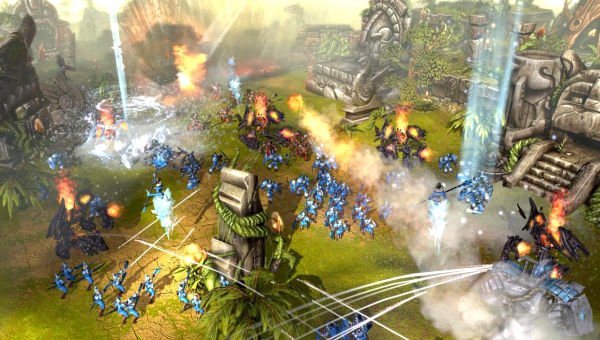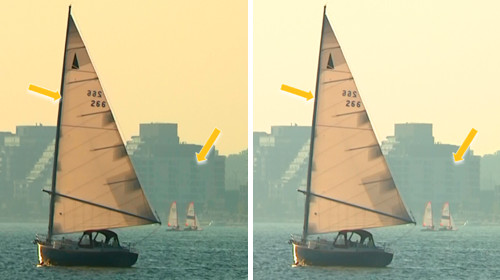RV730/RV710 architecture
In fact, all theoretical data about the new AMD architecture is published in our baseline article devoted to RV770. Low-End GPUs, to be reviewed today, have only quantitative differences from RV770 (with little nuances). This architecture scales well both ways, we can see it in these Low-End solutions. Here are the diagrams of RV730 and RV710:


We can see that RV730 differs from RV760 in the number of various execution units: ALU, ROP, TMU. Everything else is the same. RV710 has more differences, not only quantitative (fewer ALUs, ROPs, and TMUs), but also one qualitative -- L1 Cache is used for both vertex and pixel data, unlike separate caches in more expensive solutions. The key quantitative changes: the number of shader processors in RV730 is reduced to 64 (320 ALU), 16 in RV710 (80 ALU), the number of texture units is reduced to 32 and 8 correspondingly. But this time the cheap solutions have different numbers of ROPs -- 8 and 4 for RV730 and RV710. By the way, RV730/RV710 and RV770 contain different numbers of SIMD cores and streaming processors inside each core (eight ALUs instead of sixteen ones).
All these changes are introduced to reduce the number of transistors and surface area of the die, which will naturally slow this chip down relative to the fastest GPU in this series. You can read about the other architectural features of RV7xx in our baseline review, the link to this article is published above. Besides, the cheap solutions use 128-bit (RV730) and 64-bit (RV710) buses instead of a 256-bit one. Everything else published in that review holds true for these solutions as well.
The most important change in the new GPUs is a different ratio between the number of TMUs and ALUs in comparison with RV770. Although each SIMD core has four dedicated texture units, the number of ALUs inside SIMD is different, and the ratio between ALUs and TMUs is 2:1 now instead of 4:1. That is the number of texture units in RV730 was decreased insignificantly versus RV770 (from 40 to 32), while the number of ALUs was decreased from 800 to 320. It looks like AMD has made another step away from the R6xx/RV6xx architecture. Each of 32 and 8 texture units in RV730 and RV710 is a tad weaker than in RV6xx, but there are more of them, so they should yield some gain in texture fetch performance.
Let's talk about the new memory type used in HD 4600/HD 4500 cards. It's for the first time that AMD uses DDR3 memory chips (do not confuse them with GDDR3!) in mainstream graphics cards. Even though it offers the same performance level as GDDR3 (at the same frequencies, of course), prices for DDR3 memory are expected to come down to the level of DDR2 chips in the nearest future. So graphics cards manufacturers will have an opportunity to install larger volumes of relatively fast video memory.
DirectX 10.1
AMD again highlights DirectX 10.1 support in all HD 4000 (as well as HD 3000) graphics cards. This version of the main graphics API from Microsoft lifts off some limitations of the previous version and facilitates the use of some techniques and algorithms. We should also mention improved antialiasing, which helps improve image quality in some cases. But the main advantage of this API version in the nearest future will be increased performance of some algorithms owing to fewer render passes required. The first DirectX 10.1 games will most likely feature these differences rather than some visual improvements. You can read about this API in our baseline review of RV670.
The first games to support DirectX 10.1 are supposed to be projects from Electronic Arts and Phenomic Studio, SEGA, and NHN Games. They are the online RTS Battleforge, futuristic RTS Stormrise, and an RPG called Cloud 9. All these projects are said to use DirectX 10.1 features to raise rendering performance and graphics quality. Release dates are not announced yet, they will most likely roll out in 2009.
ATI Avivo
Just like the top GPU in this series, RV730 and RV710 have a built-in Unified Video Decoder of the second generation (UVD 2). It appeared in Radeon HD 3000 cards, and then it was adapted to HD 4000 without significant changes. UVD2 decodes video data in all popular formats: H.264, VC-1, and MPEG-2. This video processor was modified in the new HD 4000 solutions to be able to decode two full-size (1080p) video streams simultaneously to support some Blu-ray features. Besides, improved post processing features were added, such as scaling DVD video to HD resolutions and dynamic contrast adjustment.
Improved Scaling
ATI Avivo in Radeon HD 4000 products includes high-quality video scaling from low (for example, DVD) into HD resolutions (720p, 1080p). Thus, ATI Avivo HD can scale standard DVDs (720x480 or 720x576) to HD devices (1920x1080 or 1920x1200) with better quality than the usual software scaling in players. That's what AMD demonstrates in its presentations:
We can see that the left part of the image is sharper than the right part, both vertically and horizontally. We'll try to analyze this issue in more detail in our future tests of performance and quality of hardware-assisted video decoding.
Dynamic Contrast Adjustment
Contrast has a strong impact on how we perceive visual data. Low-contrast images usually look pale and less sharp, when small details are hard to distinguish in some areas of the image. Most players allow to adjust contrast. But these settings do not change from scene to scene, although optimal settings of contrast will be different for various scenes.
ATI Avivo HD allows to change video contrast dynamically. Special post processing algorithms automatically adjust contrast, constantly adapting to changing video parameters. It improves the way a human eye perceives video, providing more details and higher sharpness (see the image on the left):
PowerPlay
The new GPUs support the second generation of ATI PowerPlay technology. It's an improved version of dynamic power control. That's what this technology does -- a special control circuit in the chip monitors GPU load and determines an optimal operating mode by adjusting GPU/memory clock rates, voltages, and other parameters, optimizing power consumption and heat release.
GPU voltage and frequencies as well as fan speed will be minimized under low GPU load in 2D mode. Medium 3D load will set all parameters to mid values. And maximum GPU load will be processed with maximum parameters. Thus, the overhauled power management technology significantly improved energy efficiency of RV7xx GPUs versus the previous generation of graphics cards.
So, we've got acquainted with theoretical info about the new Low-End GPUs based on the RV7xx architecture. The next practical part of this article will show how the new solutions perform versus previous solutions from AMD and competing cards from NVIDIA in our usual synthetic tests.
In the first part of the article we've covered theoretical aspects of the new graphics card (to be more exact, an entire series). Even at this point its functions look very good for such an inexpensive graphics card.
Has AMD actually managed to cram so much power into a budget solution that it can compete with older Mid-End cards? And will it keep ahead of the other products of the same class with similar price tags? We'll look into this issue.
Write a comment below. No registration needed!






